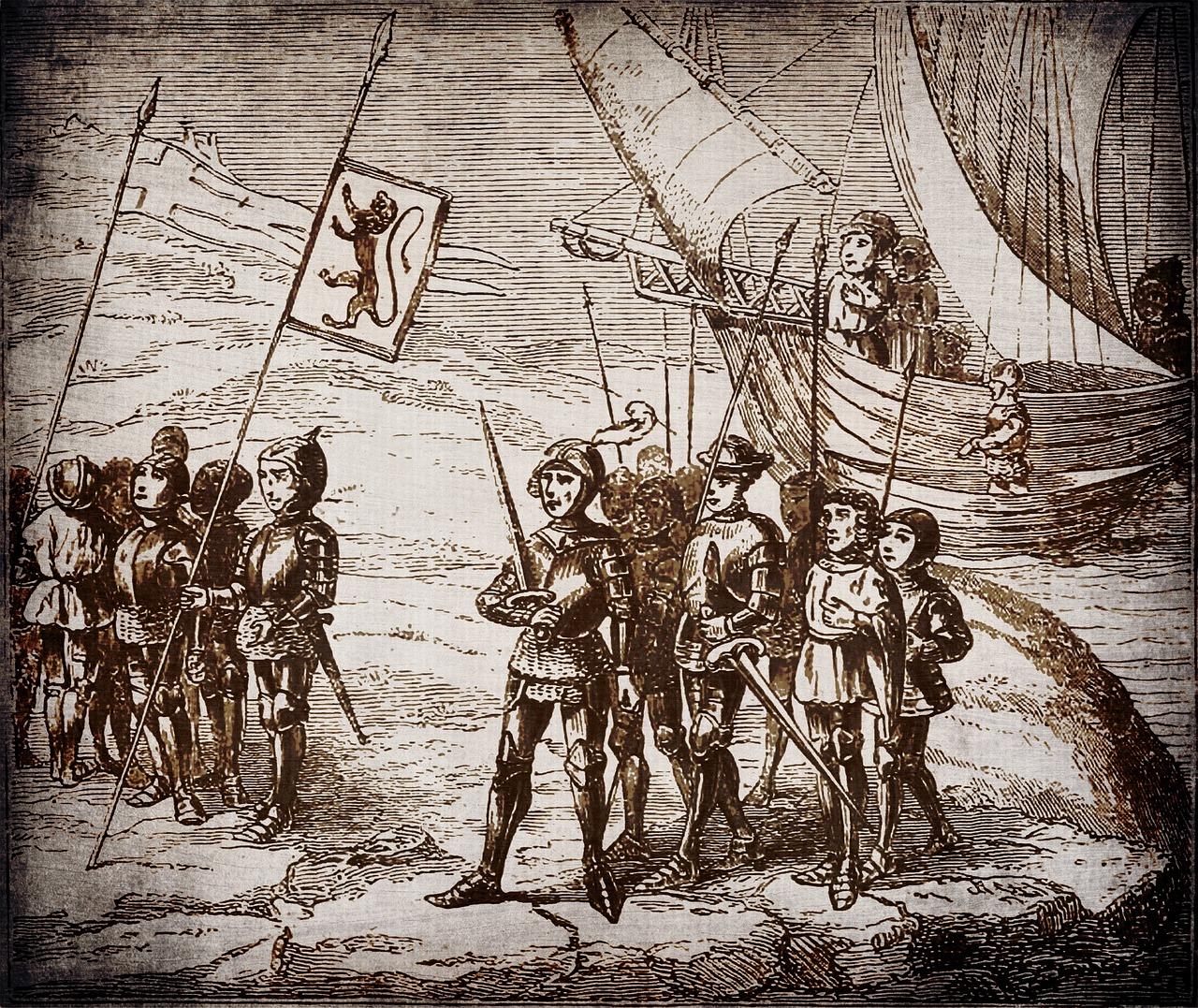In the ancient civilization of Sumer, located in Mesopotamia (modern-day Iraq), religion permeated every aspect of life. The Sumerians worshipped a pantheon of gods and goddesses and held elaborate religious rituals to ensure the favor of these deities. While Sumerian religion was predominantly male-dominated, women and slaves played significant roles within its religious framework.
In this blog post, we will delve into the fascinating realms of Sumerian religion, exploring the roles and contributions of women and slaves. We will uncover the power dynamics at play, the different types of slaves in Mesopotamian society, and whether women held positions of authority. Join us on this exploratory journey to understand the fascinating intertwining of religion, gender, and social status in ancient Sumer.
Are you ready to dive into the rich tapestry of Sumerian religion? Let’s unravel the mysteries together and gain insights into the often overlooked roles of women and slaves. Discover how these marginalized groups influenced, participated, and contributed to the vibrant religious practices of ancient Sumer.

Women and Slaves in Sumerian Religion: Partners in Faith
When it comes to understanding the role of women and slaves in Sumerian religion, it’s important to recognize that ancient societies often had diverse beliefs and practices. While men held prominent positions within the religious hierarchy, women and slaves also played significant roles in the religious rituals and beliefs of the Sumerians.
Women: More Than Mere Spectators
Contrary to popular belief, women in Sumerian society held positions of influence and power within the realm of religion. They were not merely passive onlookers but active participants, contributing to the spiritual fabric of their community.
Priestesses: Leading the Divine Charge
One of the most notable roles that women played in Sumerian religion was that of the priestess. These women held important positions within the temples and acted as intermediaries between the mortal and divine realms. With their dedication and knowledge, priestesses performed sacred rituals, offered prayers, administered sacred rites, and participated in religious processions. Their efforts were vital in maintaining the connection between the Sumerian people and their deities.
Goddesses: Divine Influencers
The Sumerians revered female deities, and these goddesses were believed to hold significant power and influence in their religious practices. Inanna, the goddess of love and war, was particularly venerated and held sway over both mortals and gods alike. Other goddesses such as Ninhursag, the mother goddess, and Ninlil, the goddess of the wind, played integral roles in Sumerian myths and religious ceremonies. These goddesses represented not only nurturing aspects of life but also the powers that shaped the natural world.
Slaves: Spirituality Beyond Chains
While slaves in Sumerian society were primarily seen as property, they, too, had a place within the religious customs of the time. Despite their lack of freedom, slaves were afforded opportunities to engage with the spiritual realm.
Ritual Participants: A Slave’s Connection
In Sumerian religion, slaves were often involved in various religious ceremonies and rituals. They played significant roles as participants, helping to carry out the rites, offerings, and cleansing rituals within the temples. By engaging in these practices, slaves could find solace and meaning beyond their challenging lives, connecting with the divine and seeking comfort in their faith.
Divine Intervention: Freedom Through Worship
Moreover, religious beliefs offered slaves a glimmer of hope in the face of adversity. They believed that the gods had the power to intervene in their lives, potentially granting them freedom and a better existence. Through prayer and dedication, slaves sought divine favor, hoping for a reversal of their fortunes. Religion provided them with a sense of solace and optimism, even in the darkest of times.
Recognizing Their Contributions
While the roles of women and slaves in Sumerian religion may have been different from those of men, it is essential to acknowledge and appreciate their contributions. The priestesses demonstrated strong leadership and spiritual authority, bridging the gap between humans and gods, while slaves found solace and hope within the religious practices of the time.
The complexities of Sumerian religious practices, woven with the diverse roles of women and slaves, reveal a civilization deeply connected to the divine. From priestesses leading the charge to slaves finding solace in their faith, these individuals played crucial parts in the rich tapestry of Sumerian religious life. Through their involvement and devotion, women and slaves left an indelible mark on the spiritual landscape of ancient Sumer.
So, let us remember the women and slaves of Sumerian religion, the partners in faith who defied expectations and found a place in the sacred realm, etching their names in history, their spirits forever illuminated by the flickering flame of devotion.
Note: This blog post was written in 2023.

FAQ: What Role Did Women and Slaves Have in Sumerian Religion
Welcome to our comprehensive FAQ-style guide on the fascinating topic of women and slaves in Sumerian religion. Prepare to dive into the intriguing world of ancient Mesopotamia, where gender roles and social status intersect with religious beliefs. So, let’s get started with some burning questions you might have!
How Many Types of Slaves Were There in Mesopotamian Society
In Mesopotamian society, there were different types of slaves, each with their specific roles and functions. The two primary categories were free-born slaves and war-captured slaves.
Free-born slaves included individuals who were born into slavery or were later sold into servitude by their families due to financial hardships. They occupied a wide range of positions, from domestic servants to agricultural laborers.
War-captured slaves, as the name suggests, were individuals taken captive in battles. These slaves often served in the homes of wealthy individuals or worked in the fields.
Did Women in Mesopotamia Have Power
Yes, women in Mesopotamia had varying degrees of power depending on their social status and individual circumstances. While women were generally considered to be subordinate to men, there were instances of women occupying positions of influence and authority.
Among the elite, noble women held more power and had greater autonomy. They could own property, engage in business transactions, and even attain high priestess positions. However, it’s important to note that these opportunities were limited primarily to the upper classes.
What Were the 7 Gods of Mesopotamia
The Mesopotamian pantheon consisted of numerous gods and goddesses, each holding specific domains and responsibilities. While there were more than seven gods, here are seven notable deities:
- Anu: The god of the heavens and father of deities.
- Enki: The god of wisdom, crafts, and creation.
- Enlil: The god of storms, air, and earth.
- Ninhursag: The mother goddess associated with fertility and childbirth.
- Inanna: The goddess of love, beauty, and war.
- Nanna: The god of the moon.
- Utu: The god of the sun and justice.
These gods formed the backbone of Sumerian religious beliefs and played essential roles in the lives of the ancient Mesopotamians.
What Does the Word Mesopotamia Mean
The word “Mesopotamia” is derived from the ancient Greek term meaning “land between rivers.” This region, located in modern-day Iraq, was situated between the Tigris and Euphrates rivers. Mesopotamia was renowned for its cultural, political, and technological advancements, making it a crucial cradle of civilization.
How Old Is the Oldest Story
Believe it or not, the oldest known story hails from ancient Mesopotamia. The Epic of Gilgamesh, a legendary narrative about a heroic king’s adventures, is considered the oldest surviving work of literature. Dating back to around 2100 BCE, this epic predates other famous literary classics by centuries.
What Was the Role of Women in Mesopotamian Society
The role of women in Mesopotamian society was multifaceted. While they were primarily responsible for managing household affairs, women also played vital economic roles and often engaged in craftwork and trade. Some women even held influential religious positions as priestesses, serving the gods and playing crucial roles in religious ceremonies.
What Role Did Women and Slaves Have in Sumerian Religion
Women and slaves had essential roles in Sumerian religion. Women held positions as priestesses in temples dedicated to various gods and goddesses. As priestesses, they acted as intermediaries between the divine and the human, performing sacred rituals and ensuring spiritual well-being.
Concerning slaves, they played supportive roles within religious institutions, assisting the priestly class in conducting ceremonies, maintaining temple grounds, and providing necessary services during religious festivities.
What Was the Status of Women During Early States in Mesopotamia
During the early states in Mesopotamia, women enjoyed relatively higher status compared to later periods. They had more freedom in terms of personal agency, property ownership, and participation in economic activities. However, as societal structures evolved and patriarchal systems grew stronger, women’s rights became more restricted.
We hope this FAQ-style guide has shed light on the intriguing roles of women and slaves in Sumerian religion. From the diverse types of slaves to the varying degrees of power held by Mesopotamian women, this exploration into ancient Mesopotamia offers a glimpse into a rich and complex civilization. The interplay between gender, social structure, and religious practices provides valuable insights into the cultural tapestry of this incredible ancient society.
